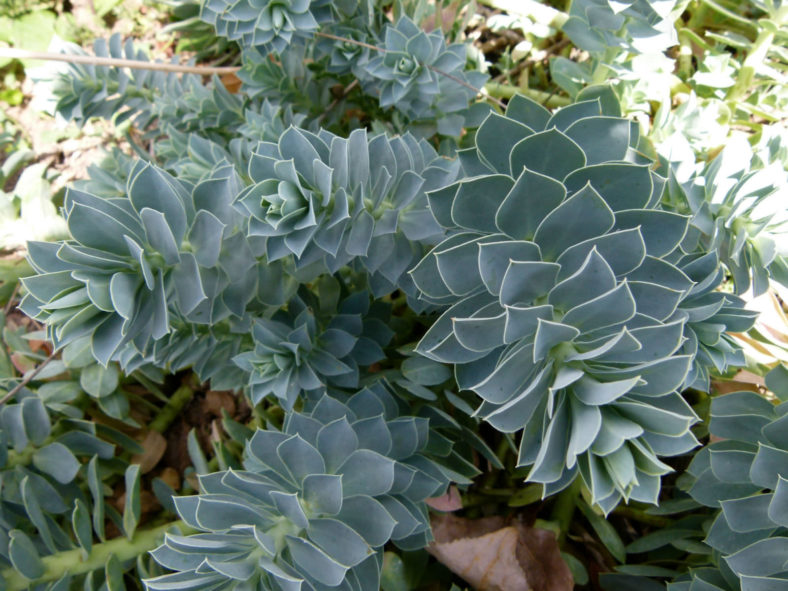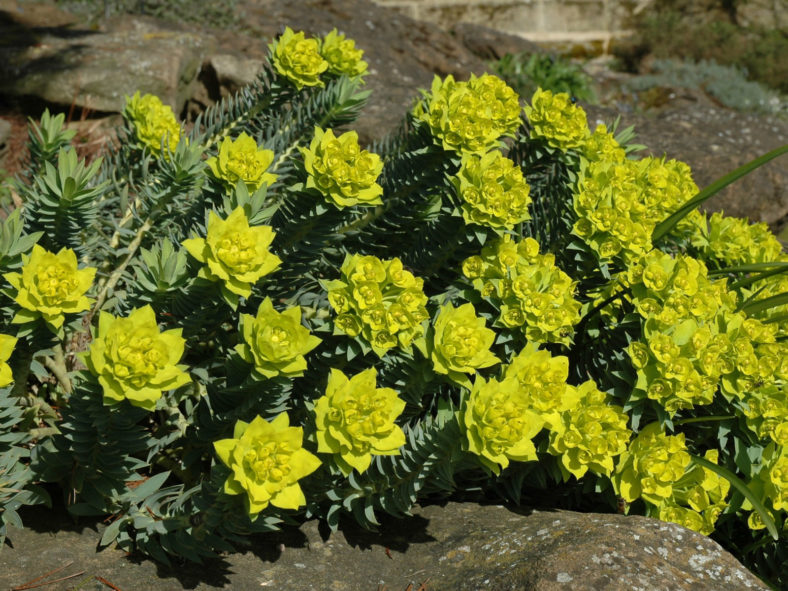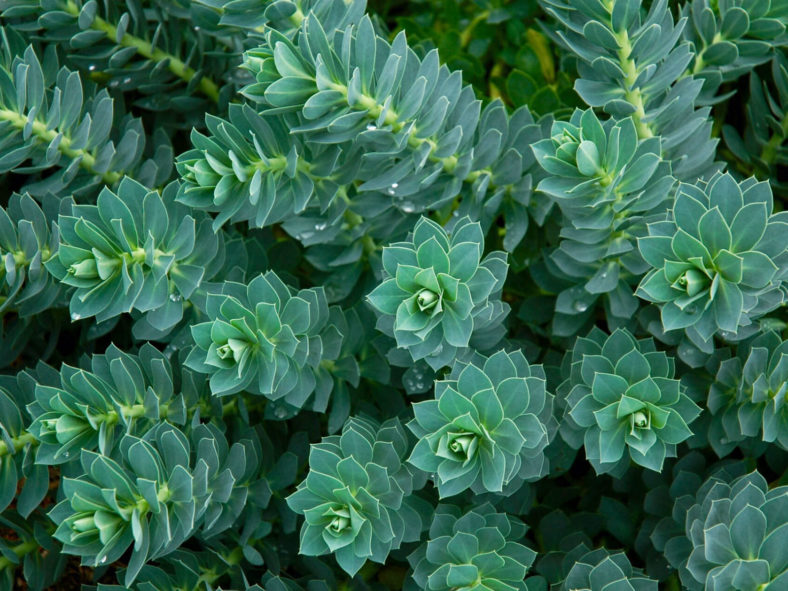Scientific Name
Euphorbia myrsinites L.
Common Name(s)
Myrtle Spurge, Myrtle Euphorbia, Blue Spurge, Broad-leaved Glaucous Spurge, Creeping Spurge, Donkey Tail Spurge, Donkey Tail
Synonym(s)
Euphorbia myrsinites subsp. myrsinites, Endoisila myrsinites, Euphorbion myrsinitum, Galarhoeus myrsinites, Murtekias myrsinites, Tithymalus myrsinites
Scientific Classification
Family: Euphorbiaceae
Subfamily: Euphorbioideae
Tribe: Euphorbieae
Subtribe: Euphorbiinae
Genus: Euphorbia
Etymology
The specific epithet "myrsinites" (pronounced "mire-SIN-ih-teez") comes from the Ancient Greek noun μυρσινίτης (mŭrsĭnī́tēs). The term was used in "De Materia Medica" by Pedanius Dioscorides to describe the resemblance of this species to Myrsine, which is the Ancient Greek name for Myrtle (Myrtus communis).
Origin
Euphorbia myrsinites is native to southeastern Europe and Asia Minor, from Italy east through the Balkans to Crimea and Turkey.
Description
Euphorbia myrsinites is an attractive succulent with trailing stems rising at the tips and covered with spirals of closely set, waxy, bluish-green leaves. The stems are succulent, unbranched or branched, and can grow up to 16 inches (40 cm) long. The leaves are fleshy and pointed, measuring up to 1.2 inches (3 cm) in length and 0.7 inches (1.7 cm) in width.
The nonshowy, greenish flowers are subtended by showy, yellow bracts that are sometimes suffused with pink, especially as they age. They appear in compact terminal clusters in spring. The fruits are subglobose capsules with brownish to grayish seeds.

Hardiness
USDA hardiness zones 5a to 9b: from -20°F (-28.9°C) to 30°F (-1.1°C).
How to Grow and Care
Euphorbias are very easy to care for. These plants require a little pampering to become established, but once they are, they are self-sufficient. More die from too much care and watering than from neglect. Euphorbias need well-draining soil and lots of sunlight. They are not particular about soil pH but cannot tolerate wet soil. Unlike most succulents, Euphorbia does not handle long periods of drought well. It may need weekly watering during the summer. Water the plant whenever the soil is dry several inches below the surface. Water deeply, but avoid letting them sit in wet soil, as this can cause root rot. Add some organic matter or fertilizer to the planting hole. If you are growing Euphorbias in containers or your soil is poor, feed them with a half-strength fertilizer monthly.
These succulents can be grown from seed, but they can be difficult to germinate (or even find). They are usually propagated by cuttings. This can be tricky because of the exuding sap. Rooting hormone is recommended with Euphorbias. They tend to grow problem-free, but there are a few pests and diseases to be alert for.
Learn more at How to Grow and Care for Euphorbia.
Links
- Back to genus Euphorbia
- Succupedia: Browse succulents by Scientific Name, Common Name, Genus, Family, USDA Hardiness Zone, Origin, or cacti by Genus
Photo Gallery
Click on a photo to see a larger version.


